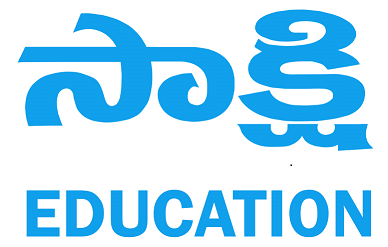June 2020 India and the World
Sakshi Education
- India to lead Summit 2020 on 21st, 22nd July
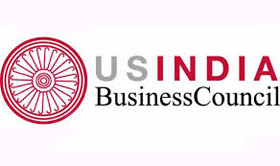 The 45th annual meeting of the United States India Business Council (USIBC) will be marked with the 2020 India Ideas Summit. India will virtually host the event on 21st and 22nd July.
The 45th annual meeting of the United States India Business Council (USIBC) will be marked with the 2020 India Ideas Summit. India will virtually host the event on 21st and 22nd July.
USIBC:
Different sessions will be organized, with each session focusing on a particular issue related to India.
The summit will showcase the importance of the positive outcome of the India-US economic partnership and the overall bilateral relationship between the two nations.
USIBC summit is an outcome of the joint efforts of the United States Chambers of Commerce and USIBC.
- ‘For minor tactical gains on the ground, China has strategically lost India’
Views expressed by Gautam Bambawale, former Indian Ambassador to China on the evolving situation along the LAC.
Details:
Gautam Bambawale has stated that the June 15 clash at Galwan Valley, which claimed 20 Indian soldiers has caused irreparable damage to the border architecture, carefully built by India and China to maintain peace.
Inflection point in relations:
Unlike previously, where despite the instances of border skirmishes along the LAC, relationship between India and China continued in some sense, the current situation would act as an inflection point in the broader bilateral relation because of the following reasons.
The Chinese have fundamentally violated all previous agreements.
In 1993, India and China signed the Border Peace and Tranquillity Agreement (BPTA), and there have been many agreements following that which have put in place certain tenets, certain operating procedures, which were aimed at maintaining peace and tranquillity on the border. These procedures have not been adhered to by the Chinese.
The Chinese have been trying to unilaterally define the LAC.
The Chinese People’s Liberation Army (PLA) has moved their ground position towards what they believe is their LAC and have built embankments, gun placements, observation towers. And by doing so, they have tried to unilaterally define the LAC. This amounts to a major change in the status quo.
Human lives have been lost on both sides during the current stand-off.
Both India and China agree that there are differences in the opinion of where the line of actual control (LAC) lies and the importance of ensuring peace and tranquillity along the LAC. The June 15 clash at Galwan Valley, claimed 20 Indian soldiers making it the worst violence since 1967 along the LAC.
India’s options:
To address the immediate needs on the ground, India has to have a very strong military posture while maintaining some room for talks and negotiations.
India’s bottom line has to be restoration of the status quo ante.
India must also make a fundamental reassessment of its China policy.
Since 1988, the model has been to separate differences on LAC from other areas such as trade. Though a complete break in relations might not be advisable it cannot be business as usual. Normal trade and investment can continue. Chinese firms must be kept out of the 5G trials and roll-out in India.
- India became 12th largest holder of US govt securities at April
India became the 12th largest holder of the United States government securities at the end of April. As per the official data, India held securities worth 157.4 billion dollars.
Highlights:
The US Treasury Department data stated showed that after March India marginally hiked the holding by 0.9 billion dollars to 157.4 billion dollars the next month.
India's holding touched a record high of 177.5 billion dollars in February, the same was drastically reduced in March. It stood at 164.3 billion dollars in January.
As per the report, at the end of April, Japan remained the country with the maximum exposure at 1.27 trillion dollars. It is followed by China at 1.1 trillion dollars and the UK at 368.5 billion dollars.
In India, the American government securities are held by the Reserve Bank of India (RBI) as the Central Banks invests in foreign assets as part of its prudential liquidity management.
Top 10 countries:- Japan with 1.27 trillion dollars
- China with 1.1 trillion dollars
- The UK with 368.5 billion dollars
- Ireland with $300.2 billion
- Luxembourg with $265.5 billion
- Brazil with $259.5 billion
- Hong Kong with $242.8 billion
- Switzerland with $241.3 billion
- Belgium with $210.2 billion
- The Cayman Islands with $206.8 billion
- India imposed Anti-dumping Duty on Steel Imports from China, Vietnam and South Korea
Recently, India imposed anti-dumping duty on imports of certain types of steel products from China, Vietnam and South Korea.
Key Points
Dumping:
In international trade practise, dumping happens when a country or a firm exports an item at a price lower than the price of that product in its domestic market.
Dumping impacts the price of that product in the importing country, hitting margins and profits of local manufacturing firms.
Anti-dumping duty is imposed to rectify the situation arising out of the dumping of goods and its trade distortive effect.
Imposition of Anti-dumping Duty:
The anti-dumping duty was imposed after the Directorate General of Trade Remedies (DGTR), in its probe, found that the steel products imported in India from these three countries were below its associated normal value, which resulted in dumping.
The duty has been imposed for five years with a view to guard domestic manufacturers from cheap imports from these countries.
Earlier, a provisional duty was imposed in October 2019 on these products from these three countries, which expired in April 2020.
According to global trade norms, including the World Trade Organization (WTO) regime, a country is allowed to impose tariffs on such dumped products to provide a level-playing field to domestic manufacturers.
The duty is imposed only after a thorough investigation by a quasi-judicial body, such as DGTR, in India.
Different from Countervailing Duty:
Anti-dumping duty is different from countervailing duty. The latter is imposed in order to counter the negative impact of import subsidies to protect domestic producers.
Countervailing Duties (CVDs) are tariffs levied on imported goods to offset subsidies made to producers of these goods in the exporting country.
CVDs are meant to level the playing field between domestic producers of a product and foreign producers of the same product who can afford to sell it at a lower price because of the subsidy they receive from their government.
- India-Tanzania Relations
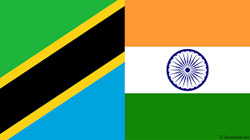 Recently, Prime Minister of India thanked Dr John Pombe Joseph Magufuli, President of the United Republic of Tanzania for his assistance provided for the evacuation of Indian citizens from Tanzania in the wake of Covid-19.
Recently, Prime Minister of India thanked Dr John Pombe Joseph Magufuli, President of the United Republic of Tanzania for his assistance provided for the evacuation of Indian citizens from Tanzania in the wake of Covid-19.
Both leaders reviewed the overall bilateral relationship and expressed satisfaction at the growing development partnership, educational linkages, trade and investment flows and discussed possibilities of further accelerating these trends.
Key Points
Tanzania is one of the fastest-growing African countries of this decade and plays an important role in India-Africa relations.
Tanzania and India have enjoyed traditionally close, friendly and cooperative relations.
The High Commission of India in Dar es Salaam has been operating since November 1961 and the Consulate General of India in Zanzibar was set up in October 1974.
In October 2019, as part of the Indian Navy's Overseas Deployment, four indigenously built ships of the Indian Navy visited the ports at Dar es Salaam and Zanzibar located in Tanzania.
Bilateral Treaties & Agreements:- Agreement on the establishment of a Joint Trade Committee (2000).
- MOU for Co-operation in the field of Agriculture and Allied Sectors (2002).
- MoU on Exchange of Programme on Co-operation in the field of Education (2003).
- MOU on Defence Cooperation (2003).
- MOU for Cooperation in the field of Hydrography between Tanzania and India and Protocol on exchange of Hydrographic Data (2015).
- MOU on Cooperation in the field of water resource management and development (2016).
- Loan Agreement between Exim Bank and Government of Tanzania on line of credit for USD 500 million for water supply projects in 17 towns across Tanzania (May 2018).
Commercial and Economic Relations:
India is the largest trading partner of Tanzania comprising 16% of Tanzania’s foreign trade.
India is also among the top five investment sources in Tanzania.
India’s major exports to Tanzania: Petroleum products, pharmaceuticals and chemicals, motor vehicles, electrical goods, articles of iron and steel, sugar, machinery, etc.
Tanzania’s major exports to India: Gold ore, cashew nuts, pulses, timber, spices (mainly cloves), ores and metal scrap, gemstones, etc.
Development Partnership:
Tanzania is a major beneficiary of training courses allocated under India’s Indian Technical and Economic Cooperation Programme/Special Commonwealth African Assistance Programme (ITEC/SCAAP) and under India Africa Forum Summit (IAFS) capacity building cooperation.
India has executed a number of projects under government grants and soft loans in Tanzania.
India provided essential medicines and vaccines as grant support to Tanzania in September 2018 and set up a radiation therapy machine ‘Bhabhatron-II’ for cancer patients.
India has also extended a Credit Line to Tanzania for various water supply projects in Dar-es-Salaam, coastal Chalinze region, Tabora, Igunga, Nzega, etc.
- India- Laos Relations
Recently, the Prime Minister of India had a telephonic conversation with the Prime Minister of Lao People’s Democratic Republic (PDR).
Key Points
Both the leaders exchanged views on the health and economic challenges posed by the global Covid-19 pandemic.
They agreed on the need for international cooperation, and for sharing of best-practices and experiences, in order to prepare for the post-Covid world.
India’s Prime Minister highlighted India’s historic and cultural links with Laos and expressed satisfaction at being involved in the restoration of the Vat Phouhindu temple complex (world heritage site).
He also reiterated India’s commitment to continue its development partnership with Lao PDR, a valued partner in India’s extended neighbourhood.
Lao Prime Minister thanked India's support for Lao’s development programmes, in capacity building and for scholarships.
- Victory Day Parade
India has decided to send a contingent of 75 personnel from its three armed forces to participate in Russia's 75th World War II Victory Day Parade on 24 June, 2020.
Key Points
The Russian parade is held every year on Victory Day (May 9), which marks the surrender of Nazi Germany in 1945.
This year it was delayed because of the Covid-19.
The victory day parade honours the heroism and sacrifices made by the Russian and other friendly people.
India’s participation in the parade will be a mark of tribute and solidarity with the people of Russia.
Earlier in January 2020, Russia had invited India to take part in the victory day parade.
- India-Russia Defence Cooperation
Defence remains the most significant aspect of India's relations with Russia with both sides looking to encourage joint manufacturing of equipment under India's Make-in-India programme and through transfer of technology.
After the Vladivostok summit in 2019, both the countries had recognized the requirement of an institutional arrangement for reciprocal provision of logistic support and services for the armed forces.
They had also agreed to prepare a framework for cooperation on it.
During the 5th India Russia military industry conference held during the Defexpo 2020 in Lucknow (Uttar Pradesh), companies from both the countries signed various Memorandum of Understanding( MoUs) to develop a range of defence equipment.
In 2019, despite the threat of U.S. sanctions, India went ahead with the decision to purchase the S-400 missile defence system, worth over $5 billion.
Both the countries continue to encourage military to military cooperation through military political dialogue and joint military exercises.
In 2019, India and Russia carried out a second joint tri-service exercise INDRA.
In 2019, India also took part in Exercise TSENTR 2019 of the Russian Armed Force.
Despite Russia's deep military and political ties with China, and its own relations with the U.S., India continues to look at Russia as a key partner.
- AIIB Loan for India
Recently, the Asian Infrastructure Investment Bank (AIIB) has approved a $750 million loan to India to strengthen the country’s battle against the adverse impact of Covid-19 pandemic on poor and vulnerable households.
Earlier, it had approved $500 million for ‘Covid-19 Emergency Response and Health Systems Preparedness Project’ initiated by India.
Key Points
$750 million loan: It is co-financed by the AIIB and the Asian Development Bank.
Aim:
It aims to ensure economic resilience to prevent long-term damage to productive capacity, including human capital.
The support will go towards bolstering economic aid for businesses, including for the informal sector, expanding social safety nets for the needy, and strengthening the country’s health care systems.
Loan by AIIB to India:
AIIB’s sovereign loans to India amounts to $3.06 billion.
The current loan will be the second for India under AIIB’s Covid-19 Crisis Recovery Facility.
The Crisis Recovery Facility has been formed in response to urgent economic, financial and public health pressures and to support a quick recovery after the current crisis (Covid-19).
It will offer $5-10 billion of financing to public and private entities over 18 months i.e. from April 2020 to October 2021.
The funding is done either with the World Bank or ADB.
Loan by ADB to India:
It has assured Indian government of $2.2 billion support to fight against the Covid-19 pandemic.
Earlier, it had provided a $1.5 billion loan to India.
- Russia-India-China Grouping: RIC
Recently, the Ministry of External Affairs has announced that it will participate in the virtual meeting of the Russia-India-China (RIC) grouping scheduled to be held on 23rd June, 2020.
It can be noted that the RIC was also a platform for the first meeting between India and China in New Delhi after the end of Doklam standoff.
Key Points
Special Session: This special session of the RIC has been called by the current Chair- Russia to commemorate the 75th anniversary of the victory in the second world war over Nazism and creation of the United Nations (24th October, 2020).
It will also discuss the current situation of the global pandemic and the challenges of global security, financial stability and RIC cooperation in that context.
India’s Stand: The Indian decision to go ahead with the ministerial level exchange has created an opening for de-escalation of tension along the Line of Actual Control.
China’s Stand: While confirming the participation in the meeting, China has also agreed to control the situation in the border areas.
Russia’s Stand: Russia indicated that it would support “constructive dialogue” over the tension in eastern Ladakh as Russia is trusted by both India and China
Regional Connectivity:
Regional connectivity projects such as the International North South Transport Corridor involving India, Russia and Iran are expected to figure in the agenda.
International North-South Transport Corridor (INSTC), is multi-modal transportation established in 2000 in St. Petersburg, by Iran, Russia and India for the purpose of promoting transportation cooperation among the Member States.
This corridor connects India Ocean and the Persian Gulf to the Caspian Sea via the Islamic Republic of Iran and then is connected to St. Petersburg and North Europe via the Russian Federation.
No Bilateral Issues: However, the focus of the meeting will be on global coronavirus pandemic and no bilateral issues will be discussed.
RIC
RIC is a strategic grouping that first took shape in the late 1990s under the leadership of Yevgeny Primakov, a Russian politician as “a counterbalance to the Western alliance.”
The group was founded on the basis of ending its subservient foreign policy guided by the USA and renewing old ties with India and fostering the newly discovered friendship with China.
Together, the RIC countries occupy over 19% of the global landmass and contribute to over 33% of global GDP.
- India, Denmark sign MOU to develop cooperation in the power sector
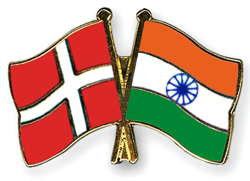 India and Denmark signed a Memorandum of Understanding (MoU) on Indo-Denmark Energy Cooperation to develop cooperation in the power sector.
India and Denmark signed a Memorandum of Understanding (MoU) on Indo-Denmark Energy Cooperation to develop cooperation in the power sector.
The MoU was signed between the Ministry of Power, India, and the Ministry for Energy, Utilities, and Climate, Denmark. The MoU was signed by Mr. Sanjiv Nandan Sahai, Secretary (Power) from India and Mr. Freddy Svane, Ambassador of Denmark to India from Denmark.
MoU Provisions:
Under the MoU, a strong, deep, and long-term co-operation between two countries in thepower sector will be developed on the basis of equality, reciprocity, and mutual benefit.
The MoU will establish collaboration in areas like offshore wind, long term energy planning, forecasting, flexibility in the grid, consolidation of grid codes to integrate and operate efficiently variable generation options, flexibility in the power purchase agreements, incentivize power plant flexibility, variability in renewable energy production, etc.
The Indian electricity market would benefit from cooperation with Denmark in all the aspects of power.
To implement the agreement, a Joint Working Group (JWG) will be established under the MoU.
The JWG will be co-chaired by Joint Secretary level officials.
JWG will report to a Steering Committee, jointly chaired by the Secretary level officer from both sides.
GoI aims to take the necessary steps to encourage and promote strategic and technical co-operation in the power sector for mutual benefit.
- e-Diplomacy
Recently, the first India-Australia Virtual Leaders’ Summit was held where important strategic decisions, ranging from military interoperability to jointly tackling the pandemic, were made.
The summit was noteworthy for its novel modus operandi after the dangers posed by Covid-19 have compelled the traditional summit diplomacy to adapt to new digital ways.
Key Points
e-Diplomacy (electronic diplomacy) is the use of technology by nations to define and establish diplomatic goals and objectives and to efficiently carry out the functions of diplomats.
These functions include representation and promotion of the home nation, establishing both bilateral and multilateral relations, consular services and social engagement.
The pandemic has forced mankind to maintain physical and social distancing, leading to a shift towards work from home mode and using online platforms for education (online classes), business (e-Commerce) and other daily things.
Just as corporations and educational institutions have migrated to online mediums, nation-states are left with no choice but to do the same by conducting virtual or e-summits.
- Rights Issue
Recent reports suggest that several companies, including Mahindra finance, Tata Power, Shriram Transport Finance among others are planning to raise funds through “rights issue” amidst the Covid-19 pandemic.
Key Points
Recently, Reliance Industries Limited (RIL) has concluded its rights issue and raised a total of Rs. 53,124 crore and witnessed an oversubscription of 1.59 times.
RIL’s Rights Issue is India's largest rights issue.
The successful rights issue of RIL and the big demand (oversubscription) shows that there is a huge demand in the market for the shares of companies with strong credentials at a good price.
Definition:
A rights issue is a mechanism by which companies can raise additional capital from existing shareholders.
It is different from public issue (Initial Public Offer) and private placement.
Advantages:
A company would offer a rights issue in order to raise capital which can be used to clear its debt obligations, acquire assets, or facilitate expansion without having to take out a loan from a bank.
It is a more efficient mechanism of raising capital. Under it, there is no requirement of shareholders’ meeting and an approval from the board of directors is sufficient and adequate.
Therefore, the turnaround time for raising this capital is short and is much suited for the current situation (Covid-19 pandemic).
Disadvantages:
Raising funds through the right issue might create pressure on the company.
Value of each share may get diluted.
If the share price decreases post rights issue then investors may lose the holding value.
Holding value is an indicator of an asset that someone has in his/her portfolio. It is a value which sums the impacts of all the dividends that would be given to the holder in the future, to help them estimate a price to sell or buy assets.
Stock exchanges put a restriction on the amount on which a company can raise via the right issue.
- Nepal: the Oli problem
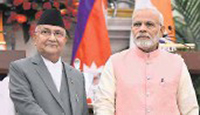 Nepal’s decision to pass a constitutional amendment to change Nepal’s official map to include parts of Indian Territory that have been in dispute.
Nepal’s decision to pass a constitutional amendment to change Nepal’s official map to include parts of Indian Territory that have been in dispute.
Background:
The promulgation of the Nepali Constitution, one that India felt was unfair to Madhesis living in the south and unrepresentative of India’s interests in the country, seems to mark a drastic change in the relationship between India and Nepal.
The blockade at the India-Nepal border resulted in supplies into landlocked Nepal being stopped for months. This adversely affected the India-Nepal relations.
The eight-point transit and transport facilitation from China seems to have tilted Nepal towards a stronger relationship with China.
The release of India’s new political map of Jammu and Kashmir, and Ladakh has been the latest flashpoint in the relations.
Concerns
Anti-India poll plank:
The concern over Nepal Prime Minister K.P. Sharma Oli’s “nationalist politics” translating into an “anti-India” stance seems to be coming true for India.
Mr.Oli has been running an anti-India poll plank during recent elections.
For PM Oli, this anti-India stance based on nationalistic plank seems to be a legacy building exercise in the Nepali political landscape.
The growing discord against Mr. Oli’s leadership within his own party has resulted in Mr Oli taking a hard stance towards India in an effort to deflect attention from domestic affairs.
India has also hardened its position with Mr. Oli.
Despite the agreement in 2014 over Foreign Secretaries meeting on the Kalapani and Susta disputes, no meeting on the disputes has been held in six years.
The Nepal PM, wooed by the U.S. and China due to its strategic location, has been insisting on more strategic autonomy in the region and moving away from its traditionally strong relation with India.
- MoU between India and Bhutan
The Union Cabinet has given its approval for signing of a Memorandum of Understanding (MoU) with Bhutan for cooperation in the field of environment protection and management of natural resources.
The MoU will enable establishment and promotion of closer and long-term cooperation in environment protection and management of natural resources on the basis of equity, reciprocity and mutual benefits, taking into account the laws and legal provisions in each country.
Key Points
Background:
A Memorandum of Understanding (MoU) was signed between the Central Pollution Control Board (CPCB) of India and the National Environment Commission (NEC) of the Government of Bhutan in 2013.
This MoU expired in 2016.
Noting the benefits of the earlier MoU, both sides have decided to continue cooperation and collaboration in the field of environment to strengthen the Indo-Bhutan relationship.
Details of the New MoU:
Time Period: The MoU shall enter into force on the date of signature and shall continue to remain in force for a period of ten years.
Areas of Cooperation: Air, Waste, Chemical Management, Climate Change and Any other areas jointly decided upon.
Exchange of Best Practices:
The MoU shall facilitate exchange of experiences, best practices and technical knowledge through both public and private sectors and research institutions for sustainable development.
Joint Working Group:
It provides for joint projects in areas of mutual interest.
It provides for holding of Joint Working Group / bilateral meetings to review and analyze the progress of activities and keeping their respective ministries/agencies, duly informed of progress and achievements.
- Australia to be Included in Malabar Exercise
India is prepared to expand the Malabar exercise to also include Australia.
India and Australia are soon to be holding a virtual summit for better cooperation and strengthening bilateral ties.
Malabar Exercise
It is an annual trilateral naval exercise between the navies of India, Japan, and the USA which is held alternately in the Indian and Pacific Oceans.
It began as a bilateral naval exercise between India and the USA in 1992 and was expanded into a trilateral format with the inclusion of Japan in 2015.
Other exercises between India and Australia are Pitch Black and AUSINDEX.
Key Points
Despite regular requests from Australia, India resisted issuing the invitation due to its concerns that the move would give the appearance of a ‘quadrilateral military alliance’ aimed at China.
However, the recent India-China tensions over the situation at the Line of Actual Control (LAC) may have brought more flexibility to the decision making process.
India is already a member of the Quad and attended the Quadrilateral Security Dialogue held in November 2019.
Quad is the informal strategic dialogue between India, the USA, Japan and Australia with a shared objective to ensure and support a free, open and prosperous” Indo-Pacific region.
Published date : 18 Jun 2020 12:12PM


















